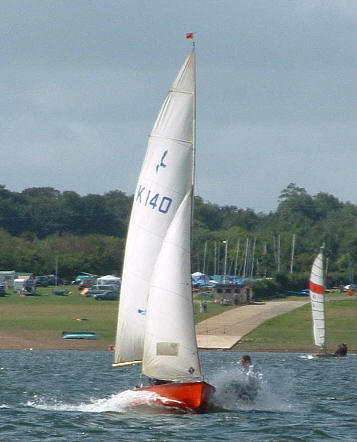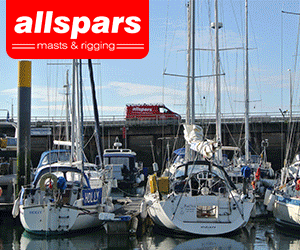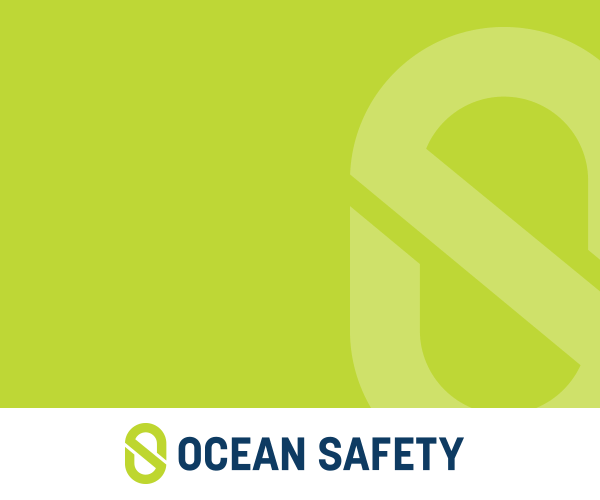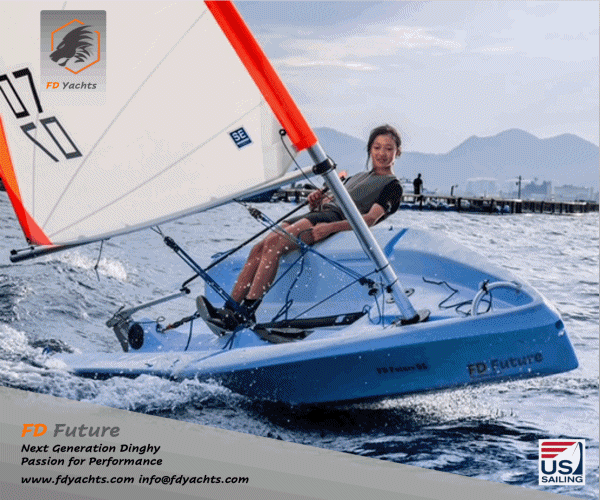Proper Course |
Post Reply 
|
Page 123 6> |
| Author | |||||
gordon 
Really should get out more 
Joined: 07 Sep 04 Online Status: Offline Posts: 1037 |
 Post Options Post Options
 Quote Quote  Reply Reply
 Topic: Proper Course Topic: Proper CoursePosted: 05 Dec 13 at 2:28pm |
||||
|
I really feel that we are making life too complicated. A boat, as far as the rules are concerned is a sailboat and her crew. I can find no reference in the rules to a boat including windshadow, bow wave, stern wave or whatever.
If there are no cases on a rule that is usually because there are few, if any, protests involving that rule. In this case, if the leeward boat was that close to the windward boat I would be looking more at rule 16.1 than 17. Windward boat is required to keep clear (even if rule 17 is on) and leeward boat is required to give room to keep clear if she changes course. If windward could not keep clear while manoeuvering in a seamanike way then leeward has broken rule 16.1. If she can keep clear all well and good and there is unlikely to be an incident to protest. |
|||||
|
Gordon
|
|||||
 |
|||||
Rupert 
Really should get out more 
Joined: 11 Aug 04 Location: Whitefriars sc Online Status: Offline Posts: 8956 |
 Post Options Post Options
 Quote Quote  Reply Reply
 Posted: 05 Dec 13 at 8:34am Posted: 05 Dec 13 at 8:34am |
||||
|
Sailing to the waves is what you would do whether the other boat was there or not. The only problem I can see with that is that you do have to give the other boat time to keep clear, and sailing to the waves is very time critical, so if they are a different class (maybe a heavier one, which makes less use of the waves) then communication could be rather vital if you want to keep sailing fast, rather than crashing into another boat.
|
|||||
|
Firefly 2324, Puffin 229, Minisail 3446 Mirror 70686
|
|||||
 |
|||||
Andymac 
Really should get out more 
Joined: 04 Apr 07 Location: Derbyshire Online Status: Offline Posts: 852 |
 Post Options Post Options
 Quote Quote  Reply Reply
 Posted: 05 Dec 13 at 2:21am Posted: 05 Dec 13 at 2:21am |
||||
Since waves have been brought into the discussion. In the same context of apparent wind changes due to the windward boat, I would assume the same logic would also be applied to a change in sea state caused by the windward boat (i.e stern and bow wave)? This could be relevant in semi-planing/surfing conditions. Edited by Andymac - 05 Dec 13 at 2:23am |
|||||
 |
|||||
Brass 
Really should get out more 
Joined: 24 Mar 08 Location: Australia Online Status: Offline Posts: 1151 |
 Post Options Post Options
 Quote Quote  Reply Reply
 Posted: 04 Dec 13 at 6:43pm Posted: 04 Dec 13 at 6:43pm |
||||
Edited by Brass - 04 Dec 13 at 8:35pm |
|||||
 |
|||||
Brass 
Really should get out more 
Joined: 24 Mar 08 Location: Australia Online Status: Offline Posts: 1151 |
 Post Options Post Options
 Quote Quote  Reply Reply
 Posted: 04 Dec 13 at 6:16pm Posted: 04 Dec 13 at 6:16pm |
||||
Guys, I have never said the wind shadow is part of the other boat. That would be plain silly. JimC has it
The wind shadow only exists because of the other boat. It would not exist in the absence of the other boat. Try this: IF The windward boat casts a [significant] wind shadow AND The leeward boat bound by rule 17, and previously sailing her proper course, sails into that wind shadow AND The leeward boat changes course to windward to respond to the lessening of wind in the wind shadow (and not any change in the prevailing wind) THEN The leeward boat has sailed above the course she would sail to finish as soon as possible, had the windward boat not been there (in the absence of the windward boat), that is, has sailed above her proper course.
|
|||||
 |
|||||
andymck 
Far too distracted from work 
Joined: 15 Dec 06 Location: Stamford Online Status: Offline Posts: 397 |
 Post Options Post Options
 Quote Quote  Reply Reply
 Posted: 04 Dec 13 at 4:49pm Posted: 04 Dec 13 at 4:49pm |
||||
|
The wind shadow is clearly part of the boat. It has always been part of the rule. It can not be argued to exist in the absence of the boat that creates it.
This was never an issue until the use of assymetrics on displacement boats. We then started to hear the argument that rule 17 does not apply to me because I am an assymetric. I often used to give a copy of the rules to such skippers and ask them where in the book that exception was? The bottom line is this argument was just as invalid for assymetrics boats as it was for all other types of boat. The crux would be to look at the course before and immediately after, the Classic was the head low, hit the shadow, luff hard, then head low again. Quite clearly the luff was only there because of the windward boat. The bottom line is that the winners will keep well clear, on either side so they don't get luffed if they go to windward, or sail low enough to break through with minimum fuss. Brass has this one spot on. There does not need to be a case, as the rules a very clear, and confusion only occurs when people try to add their own definitions or aww buts. Andy |
|||||
|
Andy Mck
|
|||||
 |
|||||
jeffers 
Really should get out more 

Joined: 29 Mar 04 Location: United Kingdom Online Status: Offline Posts: 3048 |
 Post Options Post Options
 Quote Quote  Reply Reply
 Posted: 04 Dec 13 at 3:58pm Posted: 04 Dec 13 at 3:58pm |
||||
No because that is not your proper course as defined in the definitions section of the rules.
Edited by jeffers - 04 Dec 13 at 4:06pm |
|||||
|
Paul
---------------------- D-Zero GBR 74 |
|||||
 |
|||||
rogerd 
Really should get out more 

Joined: 25 May 04 Online Status: Offline Posts: 1076 |
 Post Options Post Options
 Quote Quote  Reply Reply
 Posted: 04 Dec 13 at 3:24pm Posted: 04 Dec 13 at 3:24pm |
||||
|
Interesting discussion guys. Keep it going. I am no sea lawyer but I am with Jim C and Brass on this. The wind shadow would not have been there if the W boat wasn't there so luffing up to fill your kite would be above what your proper course would have been if the W boat and hence its wind shadow wasn't there.
|
|||||
 |
|||||
flaming 
Groupie 
Joined: 04 Oct 11 Online Status: Offline Posts: 41 |
 Post Options Post Options
 Quote Quote  Reply Reply
 Posted: 04 Dec 13 at 2:17pm Posted: 04 Dec 13 at 2:17pm |
||||
This wasn't a pertinent issue to the recent protest, the facts found simply state "no evidence to suggest X sailed above her proper course" Which was rather expected given the GPS track.
There's no issue at all with the understanding of how 17 works. My question is simple - when constrained by 17 can I luff to my proper (VMG) course for the wind as I experience it in the wind shadow of the windward boat? Which seems to come down to "is the wind shadow part of the boat as referred to in rule 17?"
|
|||||
 |
|||||
jeffers 
Really should get out more 

Joined: 29 Mar 04 Location: United Kingdom Online Status: Offline Posts: 3048 |
 Post Options Post Options
 Quote Quote  Reply Reply
 Posted: 04 Dec 13 at 1:49pm Posted: 04 Dec 13 at 1:49pm |
||||
|
Ok let us break this down again....in to even simpler terms.
If Flaming is Clear Ahead or Clear Astern they can luff up to fill the spinnaker as they are not bound by the Proper Course restriction. If Flaming was overlapped when they entered the wind shadow they may only luff of to their proper course as the overlap was established from astern. Is that clear enough? So the questions to Flaming are: 1) Were you overlapped when you luffed up? 2) If yes to number 1 did you luff above the course you would have luffed if your wind was not affect by the other boat? If the answer to both is yes then you sailed above your proper course IMO. It would be interesting to see the Facts Found by the PC as this is what they would have based their decision on. Anyway.....that is enough entertainment for today, lets go sailing?
|
|||||
|
Paul
---------------------- D-Zero GBR 74 |
|||||
 |
|||||
Post Reply 
|
Page 123 6> |
| Forum Jump | Forum Permissions  You cannot post new topics in this forum You cannot reply to topics in this forum You cannot delete your posts in this forum You cannot edit your posts in this forum You cannot create polls in this forum You cannot vote in polls in this forum |
Copyright ©2001-2010 Web Wiz
Change your personal settings, or read our privacy policy











-(1)-202408140552.gif)













 Printable Version
Printable Version Delicious
Delicious Digg
Digg Facebook
Facebook Furl
Furl Google
Google MySpace
MySpace Newsvine
Newsvine reddit
reddit StumbleUpon
StumbleUpon Twitter
Twitter Windows Live
Windows Live Yahoo Bookmarks
Yahoo Bookmarks Topic Options
Topic Options